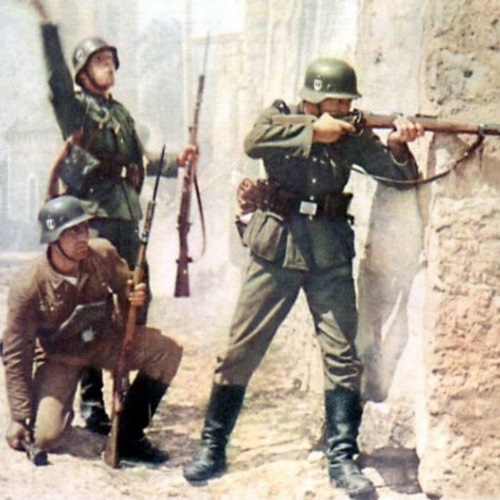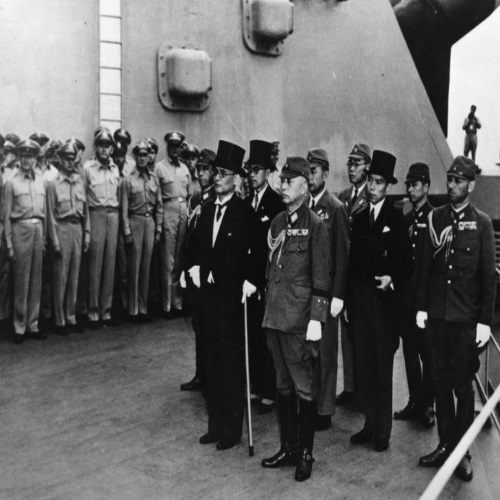Named for its designer, Dr. Richard Gatling (1818-1903), the Gatling Gun was a hand-cranked, rapid-fire machine gun. In fact, it was one of the first operational machine guns ever invented, and in many ways, it set the stage for the arrival of the more modern machine guns. Likewise, the rotary cannon may not be such a hot item these days, but the Gatling Gun is also considered to be its predecessor, due to its use of several barrels. Using different barrels simultaneously – in an effective way – can be tricky. This is why he patented his invention in 1862, and the rest is history. The original Gatling had between 6-10 barrels at its disposal, and it handled them well.
Richard Gatling
Gatling was born in North Carolina, to a family of crop planters. Working with his father on various farming machines, he found that he a knack for inventions. His father also held a couple of patents on farming equipment. In 1839, he began the process of patenting a propeller for steamboats, only to find that a patent for a similar invention had been given (only several months prior) to a fellow inventor named John Ericsson. Thankfully, Gatling didn’t despair.
In 1844 he relocated to St. Louis, MS, and began working on other inventions, taking the cotton-sowing machine as a basis for his endeavors. He invented machines for sowing various grains, and after becoming interested in medicine he received his MD from Ohio Medical College in 1850. Although he had his medical degree, he never practiced medicine and was more interested in carrying on with his inventions.
When the Civil War broke out in 1861, Gatling sought to perfect the concept of the firearm and to invent a support weapon which would diminish the number of soldiers required on the battlefield. This led to his design of the first machine gun, the Gatling Gun. Even after 150 years, the name Gatling is still synonymous with firepower and deadly results, and it commands respect among inventors and firearm-enthusiasts alike.
Historical Significance
The significance of the Gatling Gun is rooted in the fact that up until its invention, firearms manufacturers were still having trouble with creating a weapon which delivers reliable and rapid bursts of ammo.
In 1861, the first prototypes of the Gatling were ready to go, using paper cartridges since the metallic (brass and/or copper) cartridge had not been invented yet. In 1862 he established the Gatling Gun company for the purpose of marketing the gun. Union soldiers carried these into battle – the giant shooter required a four-man crew – and some of them were even mounted on ships.
The war was already over in 1886 and the iconic gun went through a redesign which solved some of its known jam-causing issues. It was this version that was picked up by the U.S. Army and famously used in the Indian Wars of the 1870s and the American-Spanish War of 1898. The weapon produced effective results in land and sea battles alike. The Gatling was also used in many wars and conflicts which took place in Asia and Africa during the second half of the 19th century. It remained in service with the U.S. Armed Forces until 1911, when it was replaced with more advanced and modern weapons.
It is ironic to consider that the point behind making this weapon was to put a mirror up to the combatants and display the futility of war. Dr. Gatling was hoping that by providing soldiers with that much firepower, wars would cease. Or, at the very least, he was hoping that less soldiers would have to die because of secondary, non-trauma-related diseases. Less men in the field means less people who could be killed.
Gatling Gun Caliber
The Gatling Guns which the U.S. Army purchased were chambered in several calibers, since there was a need for naval calibers and infantry/cavalry calibers. The original 1862 calibers – before the U.S. Army adopted it) were .50 or .58. After it had been around for a while, the heavy-hitting machine gun was adapted to fit newer calibers, right up to 1-inch.
Agar Gun
Nicknamed the “Coffee Mill Gun” due to its slight resemblance to a household coffee grinder, the Agar (or Ager) machine gun was another piece of weaponry used by combatants during the American Civil War. It was designed by Wilson Agar in 1861. Much like the Gatling itself, it saw limited action in the field. Unlike the Gatling, the gun saw no service or active duty after the Civil War was over. There were issues with jamming, overheating (it had but one barrel), effective range, and accuracy. President Lincoln himself oversaw several of the experiments conducted with the weapon and proclaimed it to be an effective and attention-worthy instrument of war.
Union commanders ordered 10 units of the Agar, and later on, 54 additional units were ordered and placed primarily at narrow paths and at various crossings and bridges. It was effective, but not in such a way that would merit its purchase or use once the war was over. Later on, the remaining units of the Agar Gun were sold off.
Gatling vs Maxim Machine Gun
Because the Gatling required a soldier to operate the crank, it was not a truly automatic weapon. The first actual automatic, recoil-operated machine gun was the Maxim Gun, invented by Hiram Stevens Maxim of the UK in 1884. This was a machine gun which remained in active duty up until 1959, when it was replaced. Like Gatling, Maxim didn’t seek out to invent an instrument of war, per se, and was more interested in inventing a weapon that would prevent wars, not inflame them.
Perhaps people the likes of Gatling and Maxim didn’t think that leaders would want to participate in wars which would necessitate the use of such bringers of death. Well, they were wrong. Not criticizing, it is just plain fact. Machine guns like these were used in all kinds of conflicts and wars, all over the world.
The biggest differences between the Gatling and the Maxim were the single barrel that the Maxim had, and the fact that it did not need to be hand-operated. But other than the action, there were also differences in caliber, rate of fire, weight, size, and worldwide usage. The Maxim was used by more forces, and had seen more wars, than the Gatling and many others guns. The Maxim also spawned several variants closely related to its original design. Gatling and Maxim are both considered to be the forefathers of the modern machine gun.
Conclusion
I first heard the word “Gatling” in the 1997 film The Jackal. Bruce Willis’ assassin character is looking for a machine gun, and while overviewing his options, the name Gatling appears. For some reason, I remembered that scene, since it struck me as creepy that a computer – with a robotic Stephen Hawking voice, no less! – would be in on the assassination of a target.
Dr. Richard Gatling was an inventor, and I am sure he would much rather have been remembered for his farming apparatuses. But this is not the way things turned out. Of course, if it wasn’t him, someone else would have invented it. But as it turns out, it was indeed him who invented the first machine gun, and war has not been fought in the same ways ever since.
Gatling didn’t set out to create a weapon of (relative) mass destruction, but it just goes to show what some people are capable of. In spite of his desire to end or prevent wars through his invention, the machine guns which he pioneered went on to become one of the world’s deadliest weapons.
Thanks for visiting Gunivore!
You may also enjoy our Automatic Weapons Overview and History’s Most Influential Firearms


